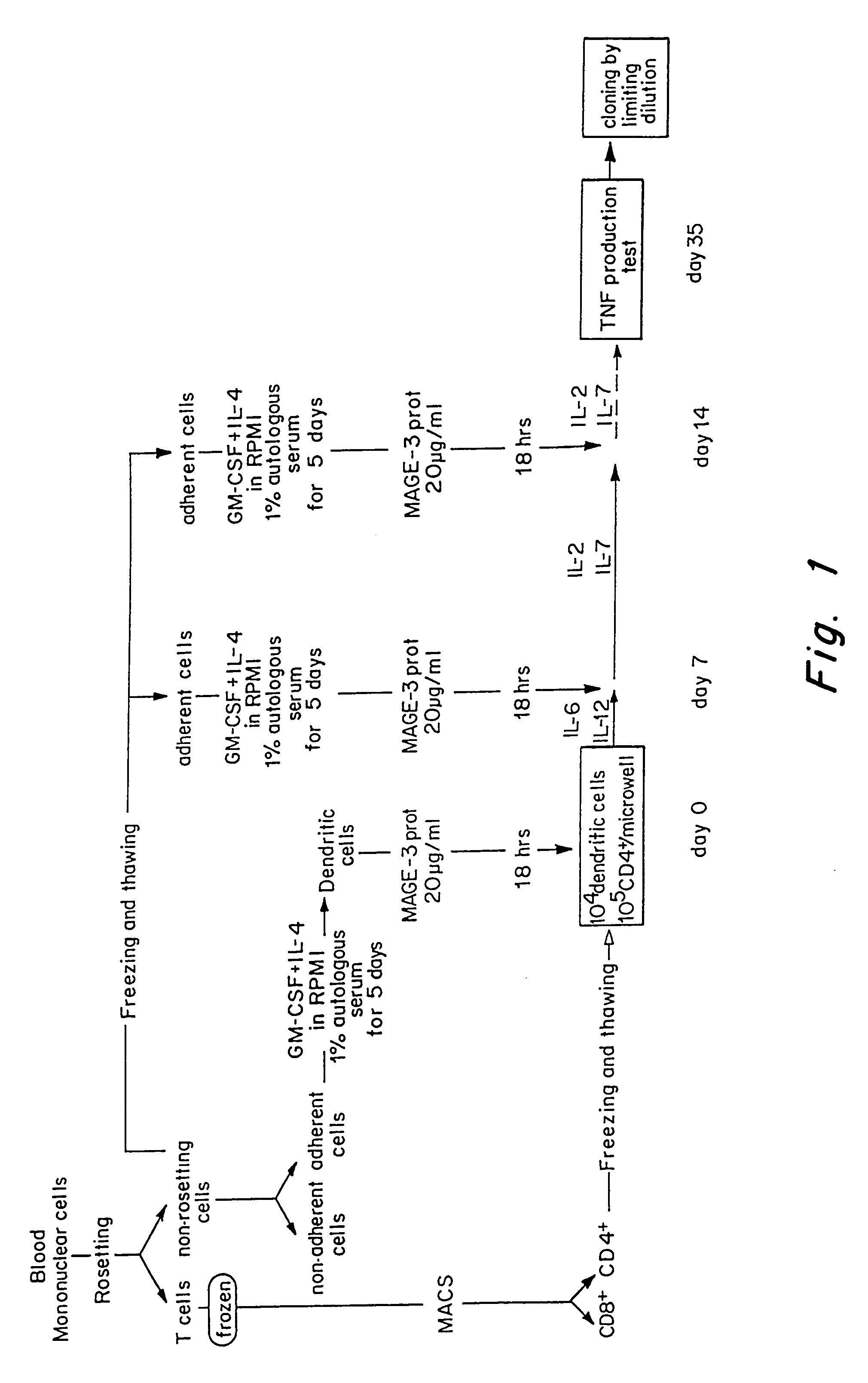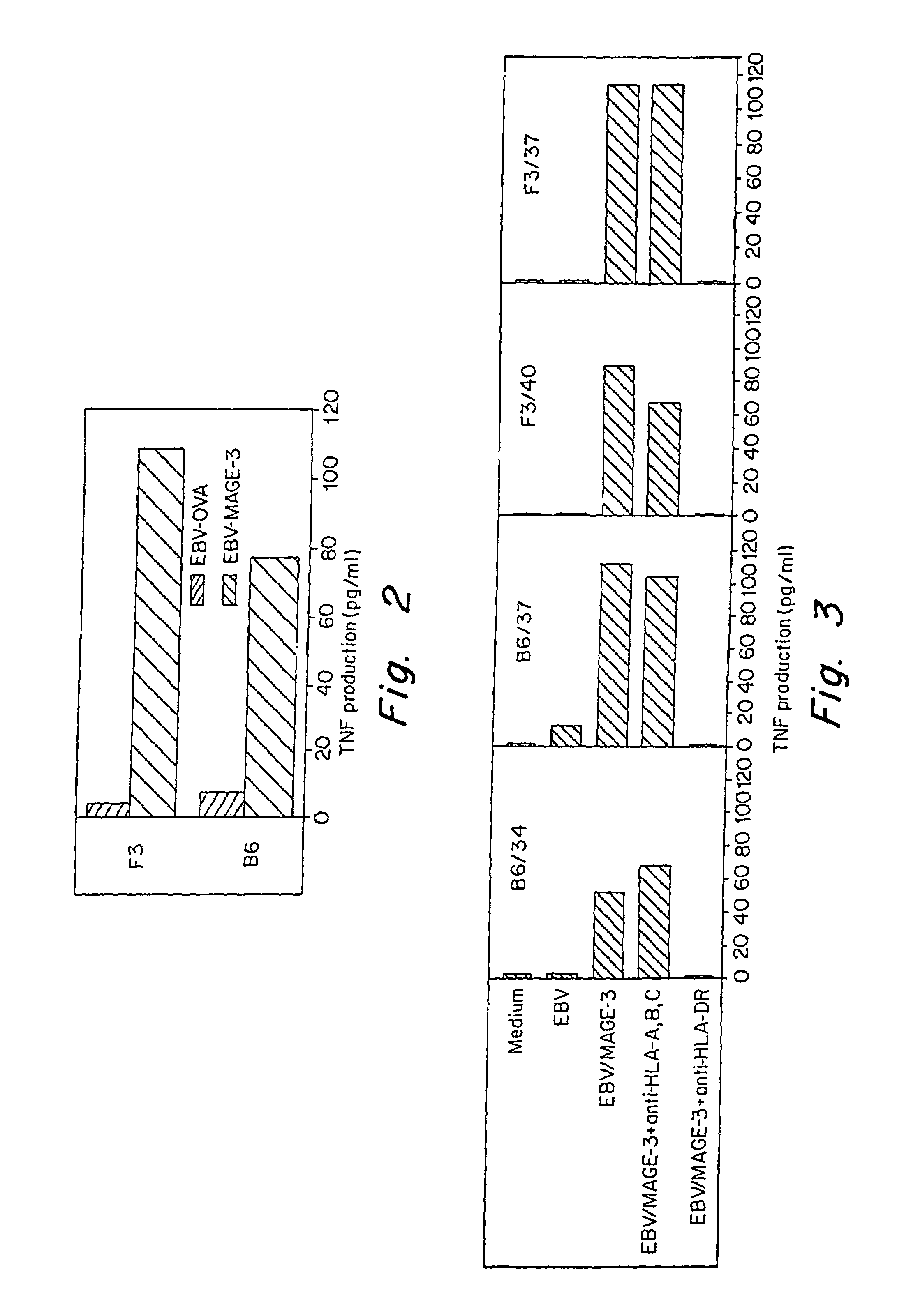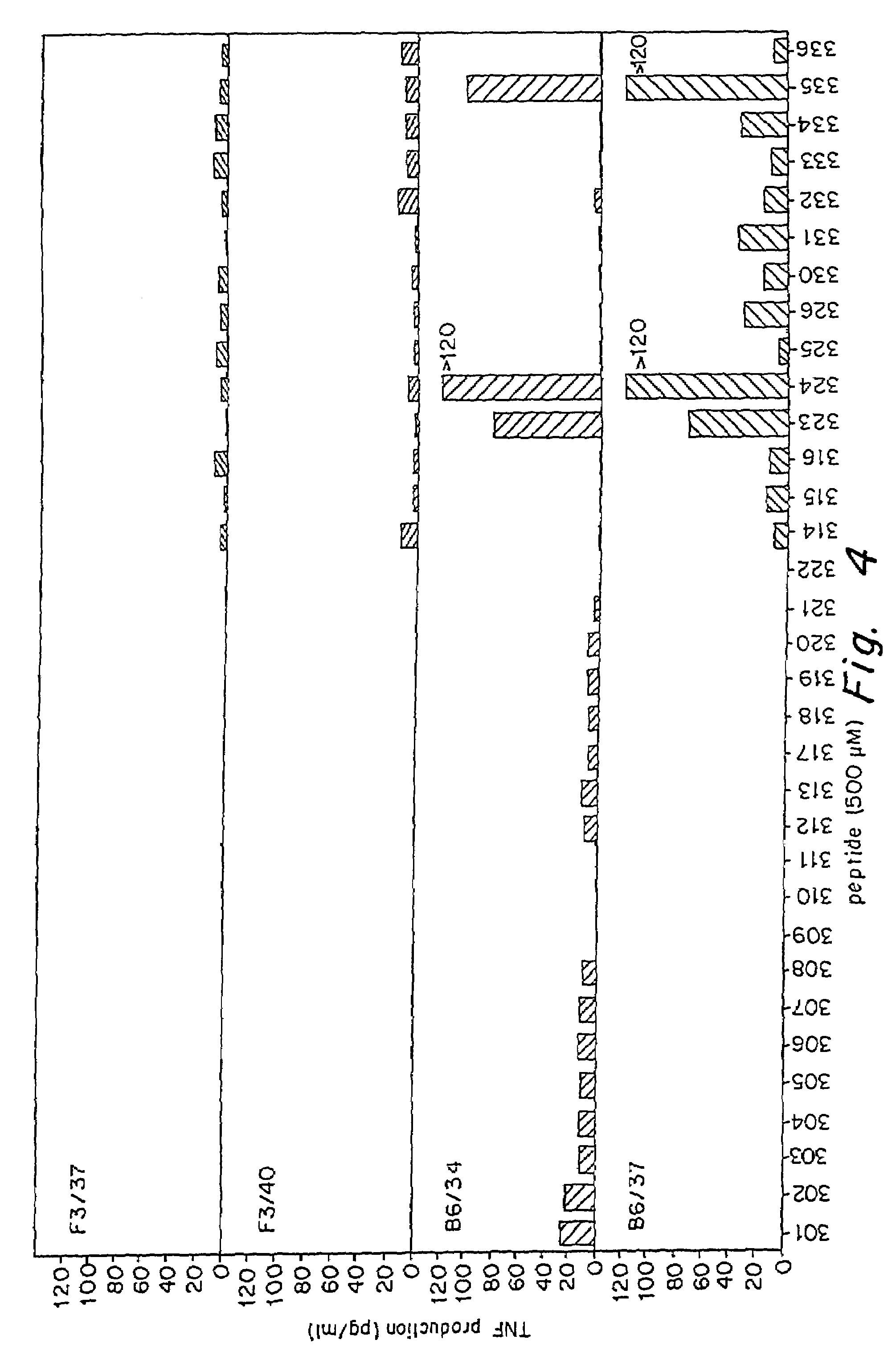MAGE-3 peptides presented by HLA class II molecules
- Summary
- Abstract
- Description
- Claims
- Application Information
AI Technical Summary
Benefits of technology
Problems solved by technology
Method used
Image
Examples
example 1
Obtention of CD4 T Cell Lines and Clones Specific for MAGE-3
[0121]The microcultures that contained proliferating CD4+ T cells were assessed around 35 days after the start of the culture for their capacity to produce TNF and / or IFN-γ when stimulated with autologous EBV-B cells pulsed with the His-MAGE-3 protein. Autologous EBV-B cells (500,000 / ml) were incubated for 18-20 hours at 37° C. in the presence of 20 μg / ml of His-MAGE-3 protein, or Ovalbumin (Sigma) as a negative control. EBV-B cells referred to herein are B cells which were immortalized with Epstein Barr virus. The EBV-B cells were prepared according to art-standard procedures. Protein-pulsed EBV-B cells were washed and added at 5,000 per round-bottomed microwell to 2,500 CD4+ T lymphocytes in 150 μl of complete Iscove's medium supplemented with L-glutamine, L-arginine, L-asparagine, 10% human serum and IL-2 (25 U / ml). After 18-20 hours, supernatants were harvested and assessed for TNF content by testing the cytotoxic effec...
example 2
Identification of the MAGE-3 HLA-DR Restricted Peptide
[0125]In order to identify the MAGE-3 peptides recognized by these CD4+ clones, 16 amino acid peptides, corresponding to parts of the MAGE-3 protein sequence were synthesized, loaded on the autologous EBV-B cells and tested for recognition (FIGS. 4 and 5). Peptides were synthesized using F-moc for transient NH2-terminal protection and were characterized using mass spectrometry. All peptides were >80% pure as indicated by analytical HPLC. Lyophilized synthetic peptides were dissolved in DMSO (Merck) and used at a final concentration of 500 μM, 50 μM or 5 μg / ml. EBV-B cells (5,000 per round-bottomed microwell) were incubated 2 hours at 37° C., 8% CO2 in the presence of the different peptides, the indicated concentrations representing the peptide concentration during the incubation step. CD4+ clones were then added at 2,500 cells per well. Assay medium was Iscove's medium supplemented with L-glutamine, L-arginine, L-asparagine, 10% ...
example 3
Determination of the HLA Restriction Element Utilized by MAGE-3 Specific CD4+ Clone B6 / 37
[0128]Cytokine secretion by these CD4+ clones in response to autologous EBV-B cell pulsed with the His-MAGE-3 protein is restricted to HLA-DR. To further define the HLA-restriction element utilized by clone B6 / 37, additional EBV-B cell lines were used for peptide presentation as described above (FIG. 7). HLA serotyping of AUMA-EBV (LB1622-EBV), LB 1555-EBV, GERL-EBV (MZ2-EBV) revealed that class II molecules shared by all three cell types were limited to HLA-DRB1 / 1302. Moreover, ADET-EBV (LB1118-EBV) was found to present effectively the MAGE-3115-130 peptide and the HLA serotyping of these cells was found to be HLA-DRB1 / 1301. Screening of several other EBV-B cell lines as described above for their ability to stimulate clone B6 / 37 when pulsed with peptide MAGE-3111-126 and MAGE-3115-130 was performed to confirm that both HLA-DRB1 / 1301 and HLA-DRB1 / 1302 can present these peptides (Table II).
[0129]...
PUM
| Property | Measurement | Unit |
|---|---|---|
| Concentration | aaaaa | aaaaa |
| Concentration | aaaaa | aaaaa |
| Concentration | aaaaa | aaaaa |
Abstract
Description
Claims
Application Information
 Login to View More
Login to View More - R&D
- Intellectual Property
- Life Sciences
- Materials
- Tech Scout
- Unparalleled Data Quality
- Higher Quality Content
- 60% Fewer Hallucinations
Browse by: Latest US Patents, China's latest patents, Technical Efficacy Thesaurus, Application Domain, Technology Topic, Popular Technical Reports.
© 2025 PatSnap. All rights reserved.Legal|Privacy policy|Modern Slavery Act Transparency Statement|Sitemap|About US| Contact US: help@patsnap.com



